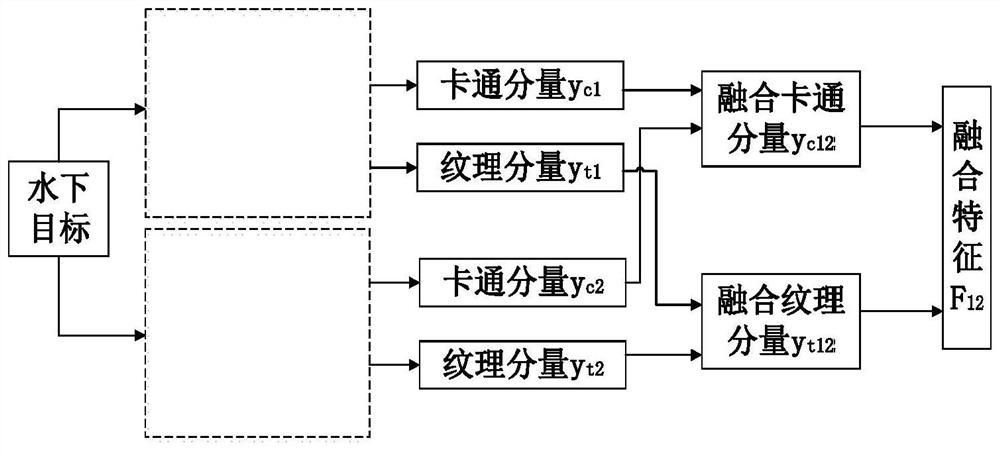Underwater sound target identification method based on morphological component analysis feature fusion
A morphological component and feature fusion technology, applied to pattern recognition in signals, character and pattern recognition, instruments, etc., can solve the problems of low target recognition accuracy, difficult target characteristics, cumbersome algorithms, etc., to save data storage space, The effect of improving the training process and saving computing resources
- Summary
- Abstract
- Description
- Claims
- Application Information
AI Technical Summary
Problems solved by technology
Method used
Image
Examples
Embodiment Construction
[0075] Below in conjunction with embodiment the present invention is described in further detail:
[0076] Such as figure 1 As shown, the underwater acoustic target recognition method based on morphological component analysis feature fusion of the present invention realizes the sparseness of feature images by establishing a sparse model of underwater acoustic target features; on this basis, the method of local morphological component analysis is used to perform feature component Separation, apply rules between the separated variables, construct the G feature extraction rules of the target, use the extracted target G features to establish the fusion features of the target under the feature fusion framework based on morphological component analysis, and design the convolution for recognition Neural network, an underwater target recognition model based on morphological component analysis and feature fusion is established, which specifically includes the following steps:
[0077]...
PUM
 Login to View More
Login to View More Abstract
Description
Claims
Application Information
 Login to View More
Login to View More - R&D
- Intellectual Property
- Life Sciences
- Materials
- Tech Scout
- Unparalleled Data Quality
- Higher Quality Content
- 60% Fewer Hallucinations
Browse by: Latest US Patents, China's latest patents, Technical Efficacy Thesaurus, Application Domain, Technology Topic, Popular Technical Reports.
© 2025 PatSnap. All rights reserved.Legal|Privacy policy|Modern Slavery Act Transparency Statement|Sitemap|About US| Contact US: help@patsnap.com



